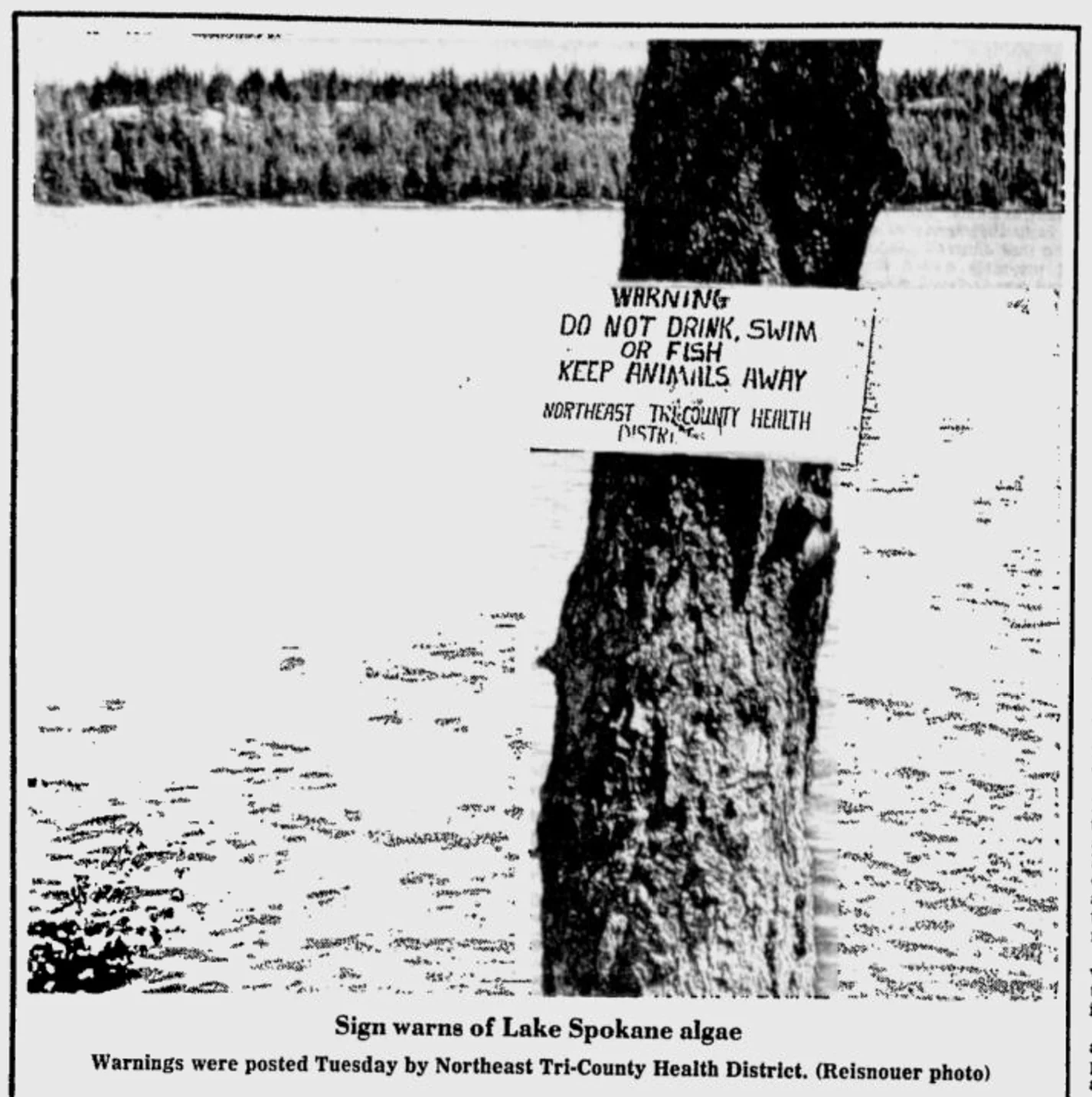The Spokane Riverkeeper conducted a water temperature study in the Hangman Creek watershed in summer of 2017. Our results show that mainstem water temperatures are much too high to support redband trout. However, results were more promising in the tributaries.
A short video comparing turbidity in Hangman Creek and the Spokane River on 2/7/2018
While it may not be apparent, the river that we love, the river that’s vital to our health and economy – needs your help. As your Riverkeepers, it is our job and our privilege to protect and defend your river so that it’s clean and safe for all to enjoy. Here’s a little background on why the river is polluted, why this pollution matters, and some easy steps that we want you to take to keep toxic pollution out of the Spokane River.
Our winter intern, Jake Peterson, takes a look at the potential sources of microplastics in the Spokane River. A previous study found microplastics in over 60% of the fish in the Spokane River, but where are they coming from and why are fish eating them?
What does a dedicated group of anglers do when sediment threatens to bury the habitat of their prized sport fish, the redband trout? Citizen science! Spokane Falls Trout Unlimited (SFTU) is leading a study to understand the intensity and duration of sediment pollution in Hangman Creek and how that effects the Spokane River.
Our guest blogger Erik Rockliffe, an angler of all waters, describes below how and why he fishes small streams. These streams provide a solitary fishing experience, full of adventure, in habitat unspoiled by humans. Read on for the report...
Input wanted! The City of Spokane is upgrading their stormwater management in the Cochrane Basin. Click to read more.
Cleaning the Spokane River isn't easy. One way of doing it is supporting the people and organizations that do much of the expensive work. The Spokane Riverkeeper applauds the City of Spokane's work to upgrade sewer and stormwater infastructure. This work will lead to a much cleaner Spokane River.
Spokane should not be conducting any effort, or be a part of any conversation to weaken Washington state water quality standards that apply to our Spokane River. Any effort on the part of any pollution discharger to weaken standards that have been put in place by the Environmental Protection Agency (EPA) for public health and safety will be met with a robust response from the Spokane Riverkeeper and the rest of Washington Waterkeepers. It is one thing to ask for time to get over a challenging bar… and quite another to work on lowering that bar.
In mid July we received a number of complaints of a sewage smell from just downstream of the TJ Meenach Bridge. We investigated and found the smell to be coming from the Cochrane Basin Combined Sewage Overflow (CSO) #12. The sample results of 4.5 bacteria/100mL were of a safe level for water recreation. Through monitoring like this, we can ensure that the Spokane River is safe for all who use the Spokane River.
When I talk to folks about the river, I can always count on one question: Is the river clean? This can be tough to answer since clean is in the eye of the beholder and can be a point of contention among different parties that work along the river.
Meet Erik. Erik loves our watershed. He also loves to fish. Specifically exploring the small streams that feed into the river and finding fish in places no one would think to look. His feelings and connection to the river echo a lot of what we feel at the Spokane Riverkeeper.
Early Spokanites used the Spokane River as a sewer and even a garbage dump - rendering the water undrinkable. After decades of work and hundreds of millions of dollars, the rivers health is improving.
I entered 35 W Main with the goal of acquiring some of the “real-world experience” that employers and graduate school admissions offices are always asking for. Though many undergraduate interns make copies and get coffee, at the Riverkeeper I worked on projects alongside Jerry and Jule that allowed me to engage with the Spokane River firsthand.
The Spokane Riverkeeper, along with the North Sound Baykeeper, and others floated Hangman Creek from Tensed, Idaho to Kentuck Trails Road in Washington, Coeur d’Alene on Earth Day Weekend 2017. Along the way we encountered great beauty, incredible restoration efforts, and vast pollution problems.
During the summer of 2016, the Spokane Riverkeeper monitored water temperature in the Spokane River and Hangman Creek. The study was conducted to examine which areas of the watershed may contain unsuitable water temperatures for native Redband Trout and exceed Washington State's water temperature standards of64F (18C). Not surprisingly, much of the Hangman Creek main stem and the Spokane River above Sullivan Road exceeded these temperatures. Surprisingly, many tributaries of Hangman Creek were much cooler than expected. Warning: This is a graph heavy post, but we wanted to get the data out there and will be following up with an in-depth report soon.
Spokane Riverkeeper has been hard at work over the past few months putting together comments (see link at bottom) on draft National Pollution Discharge Elimination System (NPDES) Permits for three dischargers on the Spokane River – City of Liberty Lake Waste Water Treatment Plant (WWTP), City of Spokane WWTP and Polychlorinated Biphenyls (PCBs), and Kaiser Aluminum, LLC. Our comments on these permits reflect the need for strong limits on pollutants entering our river.
A few weeks ago, we had the privilege of touring a Combined Sewage Overflow (CSO) tank currently being constructed underneath Pettit Drive (better known as Doomsday Hill). The City’s investment in multiple tanks similar to the one pictured below is preventing millions of gallons of combined sewage and stormwater overflow from ending up in our river. This project and ones like it are great news for the health of the Spokane
Rachel Fricke, a Spokane native who comes to us from the University of Southern California, is our Fall Intern. Below, she discusses our recent summer temperature findings.
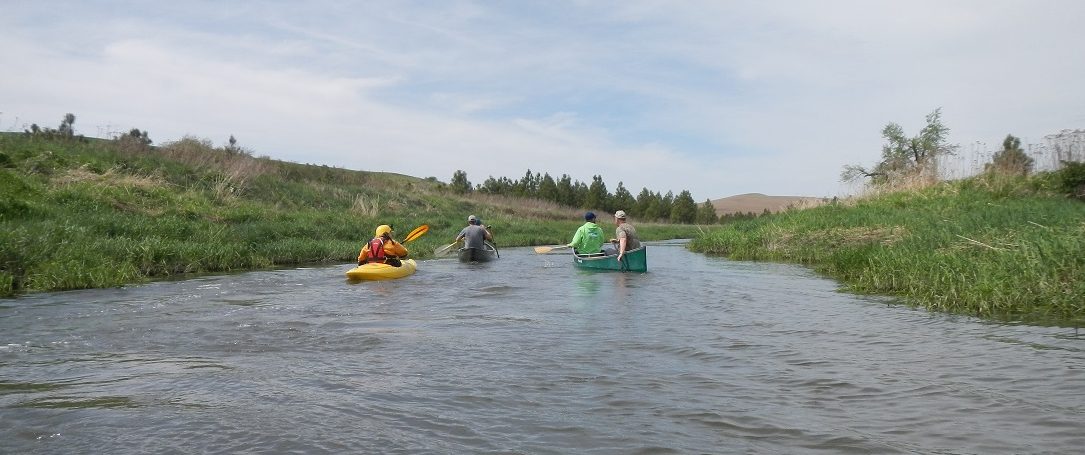
For the past month, I’ve had the pleasure of running around the Spokane River watershed collecting and recording data from temperature loggers that were placed back in June. Why does Riverkeeper care about temperature? Though temperature is not a physical or chemical pollutant, it has a direct impact on the organisms inhabiting our river and its tributaries.
The majority of freshwater-dwellers are cold-blooded, meaning their internal body temperature aligns with the temperature of their external environment. Should these organism’s internal temperatures become too hot, their cells begin to die, eventually causing mortality. Redband trout, a prominent species in the Spokane River ecosystem, live and spawn at an optimum temperature of 57.2° F. They can withstand temperature variances of a few degrees, but will not occupy regions where water temperature is significantly higher than optimum.
Our summer loggers from the Spokane River showed that temperatures reached their highest (~83° F) at the Harvard and Barker Road bridge crossings. This makes sense because these locations are upriver from where groundwater from the aquifer – which is cooler than surface water – begins feeding into the river. Further downriver at TJ Meenach we recorded a high of 63°F – a habitable temperature for Redband.
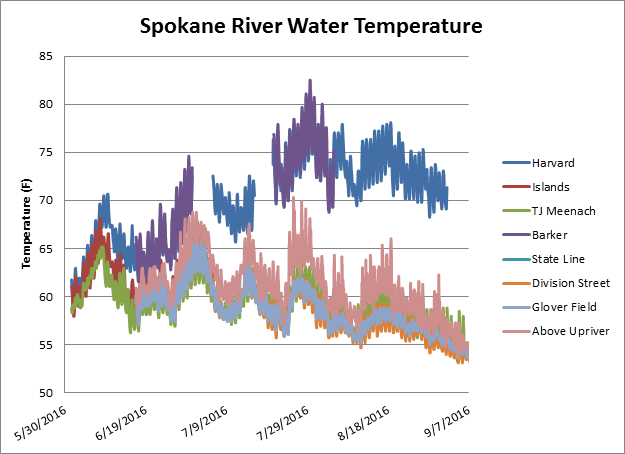
On Hangman Creek, our loggers recorded significantly elevated temperatures. At the mouth, where Hangman flows into the Spokane, temperatures peaked at 79° F. Just downstream from Tekoa at Waverly we recorded our highest water temperatures from the entire watershed – a whopping 84° F.
Hangman’s banks in this region have little to no riparian cover, also referred to as streamside forestation. Plant growth alongside streams is essential for healthy stream temperatures as it shades creek water. Hangman Creek’s current conditions in the Waverly area leave creek water directly exposed to the Palouse’s intense summer sun and heat, resulting in heightened water temperatures.
Check back within the coming weeks for a comprehensive report of this year’s temperature and water quality data. For more information on Redband trout, the Western Native Trout Initiative is a great reference.
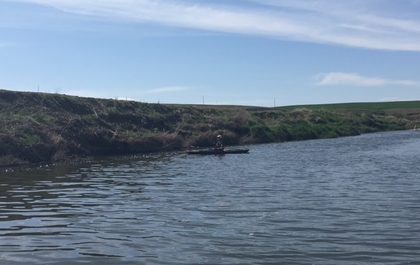
Will Tender, a student at Redlands College, interned for us this summer. He volunteered his time hauling heavy loads of garbage and helping with our water quality monitoring program. I asked him to write a short summary of what he did this summer (that's him in the blue PFD). 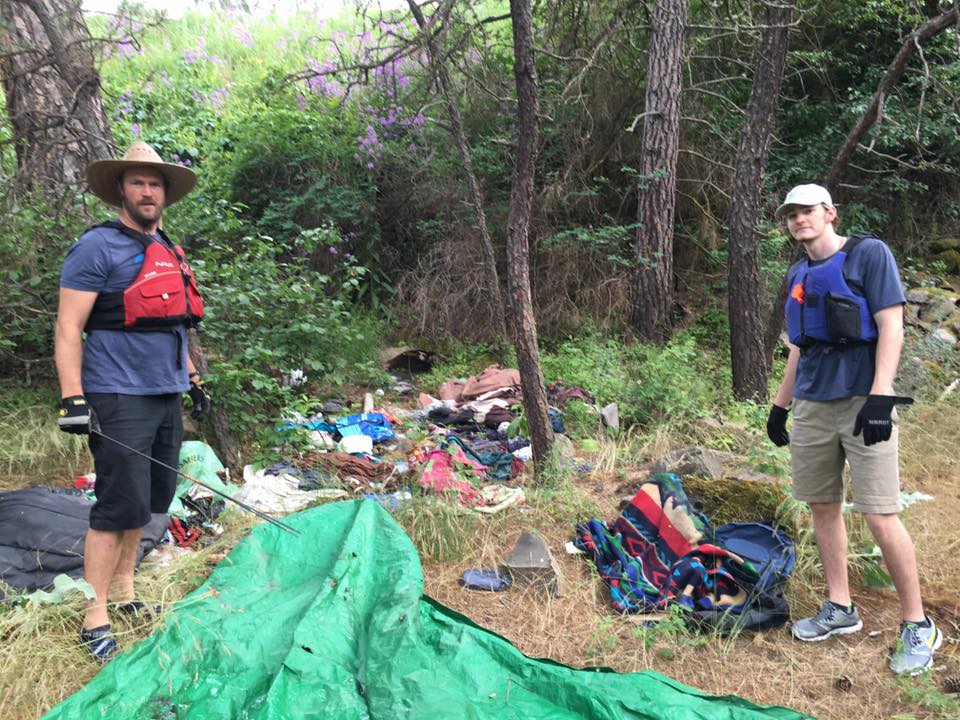 This summer I was given the opportunity to be an intern for the Spokane Riverkeeper. Throughout the experience I learned a lot about the Spokane River and Watershed. Pretty much every day I was in the field, working right beside the river. We rafted the river about once a week picking up several hundreds of pounds of garbage each day. Days we didn’t raft we would take groups out alongside the shore to pick up trash, go on water quality runs, place temperature loggers into the Watershed to help monitor the health of various spots on the river, as well as a variety of other tasks.
This summer I was given the opportunity to be an intern for the Spokane Riverkeeper. Throughout the experience I learned a lot about the Spokane River and Watershed. Pretty much every day I was in the field, working right beside the river. We rafted the river about once a week picking up several hundreds of pounds of garbage each day. Days we didn’t raft we would take groups out alongside the shore to pick up trash, go on water quality runs, place temperature loggers into the Watershed to help monitor the health of various spots on the river, as well as a variety of other tasks.
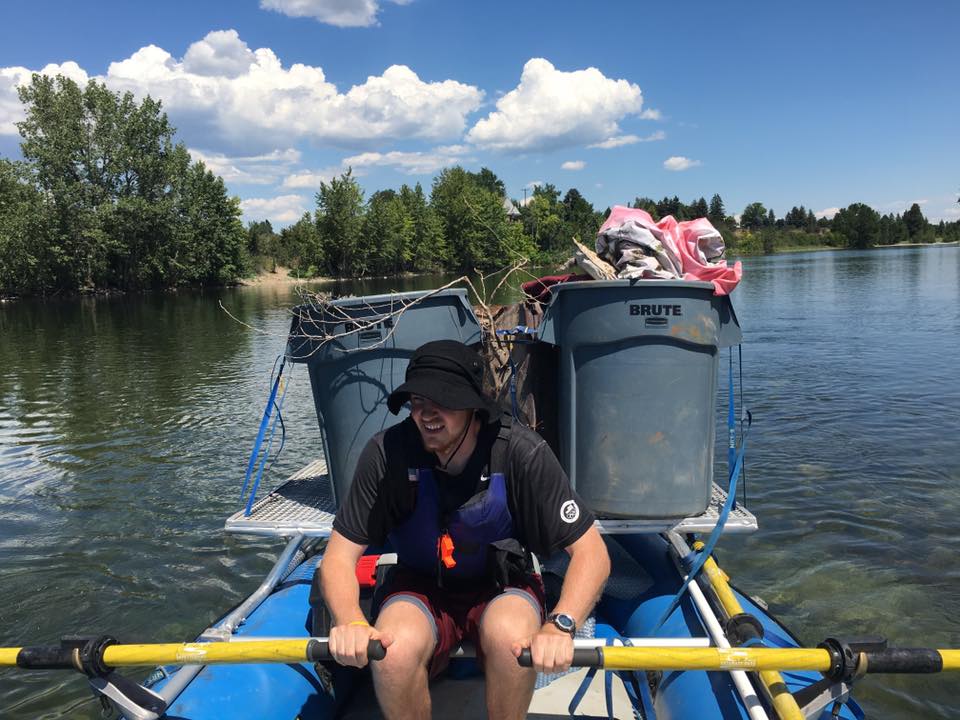 Rafting at least once a week for 3 months gives you a newfound respect and appreciation for the river. It really showed me that preservation should be taken very seriously, as something so beautiful and natural should be protected from industrialization and unnecessary pollution.
Rafting at least once a week for 3 months gives you a newfound respect and appreciation for the river. It really showed me that preservation should be taken very seriously, as something so beautiful and natural should be protected from industrialization and unnecessary pollution.
The other aspect of this experience that really altered my views was how the Riverkeeper wants people to use the river. Initially, when I began this experience I wasn’t sure the program’s stance on public usage. I thought that public usage was potentially a primary source of pollution. I came to find out that a good deal of the frequent rafters and tubers are very respectful of the river and strive to protect it. A really cool aspect of the Riverkeeper is how supportive they are of the public users, and how the program not only supports, but encourages everyone to experience the river.
Overall this opportunity opened my eyes to what goes into monitoring and protecting nature as a whole. There are so many different components that need to be addressed, and so many different players that need to be factored into the equation. This internship has been a real mentality changing experience, and I am grateful for the opportunity.














